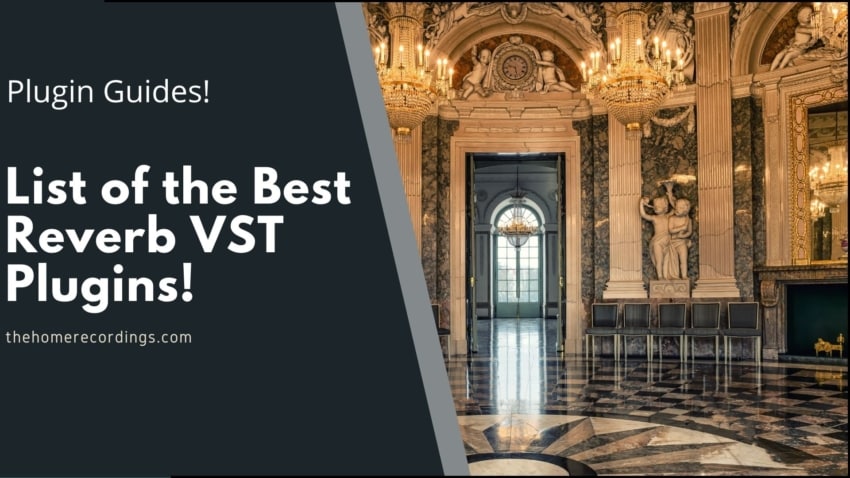Last updated on December 31st, 2023 at 08:12 pm
Reverb plugins are more commonly used to give your tracks and mixes a sense of space.
But there are some other ones which can add personality, color, and even alter the sound of the source quite a lot.
In this post, I will go over what the different types of reverb are (Room, Hall, Convolution, Plate, Chamber, Spring, and algorithmic), if you should spend your hard-earned money on such a plugin, if you actually need more than one reverb plugin, and then I will list the ones that I consider to be the best, starting with the paid ones and then listing a bunch of free reverb plugins that are excellent as well!
- Different Reverb plugin Types
- Do you need more than one Reverb Plugin?
- Altiverb (€499-€849)
- Valhalla Room ($50)
- IQ-Series Reverb V2 (€229-€289)
- Spring Reverb by Softube ($45)
- Blackhole Reverb by Eventide ($199)
- Pro-R by FabFilter ($199)
- Little Plate by Soundtoys ($39)
- MConvolutionEZ by MeldaProduction
- Silver by Acustica Audio
- Valhalla Supermassive
- Reverb Solo by Acon Digital (Free)
- PSP Springbox ($99)
- Softube TSAR-1 Reverb ($119)
- Honorable Mentions
- Conclusion
Let’s get straight to it;
Different Reverb plugin Types
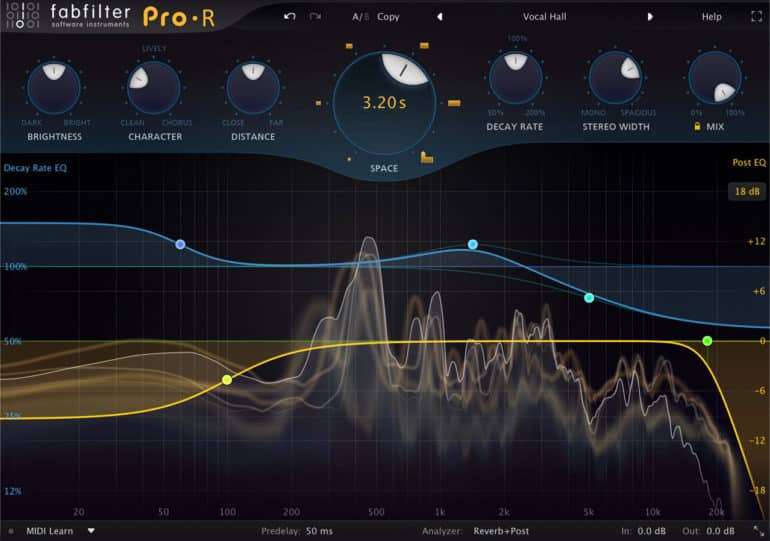
Here I will be explaining the difference between the two categories of reverb that exist (convolution and algorithmic), and also the difference between each reverb type (room, hall, chamber, plate, and spring), since they each have a different sound and use.
Convolution
Convolution reverbs rely on the use of samples (impulse responses, or IR for short) of actual real spaces. These reverbs tend to recreate how an actual space sounds, which makes them very realistic.
Algorithmic
These reverbs are digitally produced via the use of an algorithm and generally try to emulate a reverb type, such as room, hall, plate, etc.
Now let’s move on to the actual types of reverb:
Room Reverbs
This is simply the reverb of a room. Rooms, such as music studios, don’t sound huge, and this reverb type is often used to have the elements of the mix share a same space, to make them feel as if they were recorded in the exact same room. This makes the tracks sound more cohesive and more realistic.
Hall Reverbs
Hall reverbs are designed to sound big, or even huge, to give the listener the impression that the tracks were recorded in a very spacious place, such as a cathedral, concert halls, etc. The difference with reverbs that don’t sound as big is that they drown the audio in that reverb, pushing them farther back in the mix.
Chamber Reverbs
Chamber reverbs are similar to halls, delivering a lush, ambience-soaked sound. But they also give you an extra dose of clarity, which safeguards against the washed-out effect I mentioned earlier that are present in many hall reverbs.
Spring Reverbs
Often described as having a “bouncy” sound, a spring reverb uses a number of springs to reflect the sound inside a tank to create reverb. Spring reverbs are traditionally used in guitar amps (typical rockabilly sound), and sound more like a lot of short echoes rather than a specific type of room with smoother reflections.
Plate Reverbs
Last but not least, Plate reverbs work in a similar way to spring reverbs but instead of a vibrating spring that produces the effect, vibrations are sent through a metallic plate. The way this reverb sounds highly depends on the type of material used, but they generally sound very bright and smooth.
Do you need more than one Reverb Plugin?
I have to admit that we, the music producers, love our plugins, and just like most guitarists consistently want to purchase more guitars and more pedals, it’s basically the same thing with plugins.
However, the truth is that you don’t need a lot of them and, in fact, I think that you could even get by with just using the one that comes stock with your DAW, since those generally offer different reverb-style sounds (room, plate, etc.) and sound quite good.
Of course, the more reverbs you use and the more you learn about each one of them, the better you’re going to become at making decisions while mixing, and this knowledge will end up making you a better producer overall.
However, should you really buy one or are free plugins worth it?
Should you buy one or use Freeware Reverb plugins?
There are a lot of excellent freeware plugins out there that can certainly stand up to the more “pro” alternatives without making you spend your hard-earned cash, especially in recent times since free plugins have gotten a lot better than they were a couple years ago.
The difference generally lies either in the number of features a plugin has, since paid ones often have way more, or maybe the pro plugin can do everything well (all different reverb types, for example), whereas you may need to download more than one individual free plugin to do what the paid one can.
But being free is definitely not a synonym of being bad.
I’d urge you to check this list I have of over 600 plugins where I list all the posts about plugins on this website, and most of them are about free ones.
Now, without any further ado, let’s get into the actual list of plugins:
Altiverb (€499-€849)
Altiverb is a convolution reverb; Convolution reverbs are designed to place the signal into a real-world environment by using complex algorithms, and with Altiverb you can choose from the Sydney Opera House, to the Wembley Stadium, and many other real-world locations.
This plugin comes packed with tons of different acoustic spaces that were recorded all over the world, and owners of this plugin will receive one of these impulse responses for free every month.
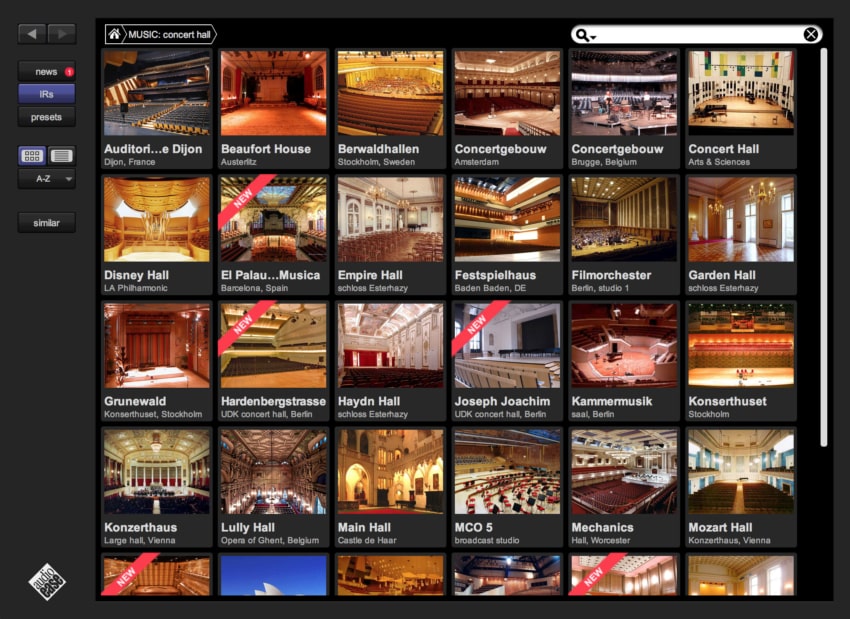
Additionally, browsing through the impulse response library is easy because you select them by clicking on the photo of the actual room, and what’s more is that this plugin lets you control where in the room you want the sound to come from.
This lets you create cool 3D images seamlessly.
Altiverb also features classic reverb gear and purpose built echo chambers which allow you to recreate the classic Sinatra and Beach Boys sound.
Lastly, this plugin comes in at €499 (Roughly $550), and that’s the cheapest version, which is quite expensive.
If you’re new to convolution reverbs, or music production in general, then you might want to start with another one before moving on to Altiverb.
Find out more about Altiverb here.
Valhalla Room ($50)
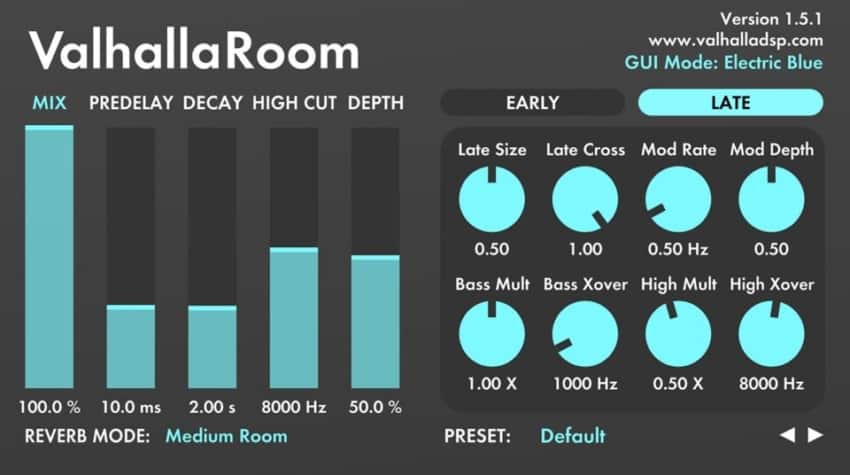
Valhalla Room is a Digital Stereo algorithmic reverb that every producer should at least consider.
It’s absolutely fantastic for film scoring, and you may not know this but Valhalla Reverb has been used in many of the best movies out there!
Additionally, it’s a tool used by composers to give their orchestras a big sound, which is what I’d recommend it for mostly; Creating a huge sound for your Orchestras, strings, pianos, and more.
What Valhalla Reverb excels at is Simplicity and overall Effectiveness, since it only features a handful of controls, such as; Predelay, High Cut, Depth and Decay, and you can mix the Early and Late reflections, making it easy to dial in the room size.
Lastly, it also features different modes, such as; Normal Room, Large Room, Dark Chamber, etc.
In terms of cost-effectiveness, Valhalla Room cannot be beat. It’s a beast of a plugin, so check it out!
Find out more about Valhalla Room here.
IQ-Series Reverb V2 (€229-€289)

The IQ Series Reverb v2 is a convolution reverb, just like Altiverb, but at a fraction of the price.
It features over 1500 impulse responses, and what’s even better is that if you already have a couple favorite ones and don’t want to lose them, you can load them into this plugin as well.
It allows you to choose between hundreds of real rooms, classic vintage equipment, and even completely new and experimental reverbs.

They also made it easy for you to find the reverb that you need thanks to the built-in browser that lets you filter and sort by brightness, RT60 and application range of an IR.
Just like with Altiverb, you can adjust the position of where you want the sound to be coming from in the stereo field by moving the “X” to a different location.
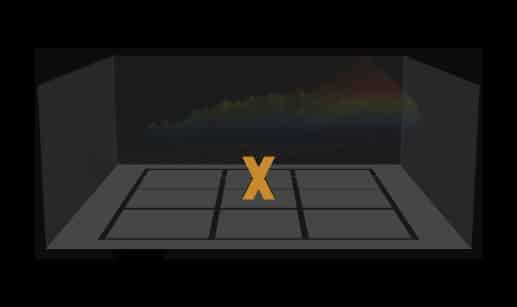
The IQ-Series Reverb V2 lets you mix up to six reverb sounds and it works in surround mode with the best mono, stereo and true stereo impulse responses and algorithmic textures.
Lastly, it features a Saturator, Gate, Ducker, Compressor and EQ to further shape your reverb sound!
If you take the time to learn this plugin, then it’s probably one of the best you could ever get!
Find out more about the IQ-Series Reverb V2 here.
Spring Reverb by Softube ($45)
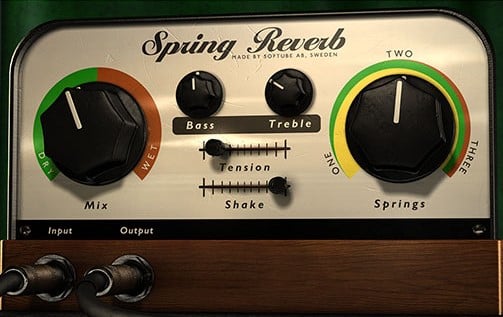
Softube is known for creating excellent plugins, some of which are even free like the One Knob Saturation plugin that I absolutely love.
Their Spring Reverb plugin is an emulation of an authentic vintage-style spring reverb that should not only give the sense of space to your productions, but character as well.
One feature is the automatable “Shake” control, which will let you shake the virtual springs around and create a cool thunderous spring effect.
The other controls are; A Mix knob, a One-, two-, and three spring selector, a spring tension control, and a tube driver simulation with Bass and Treble controls.
Guitar Track with Spring Reverb Off
Guitar Track with Spring Reverb On
It is full of character, super easy to use, and it even looks great, plus, it’s super cheap!
Find out more about Spring Reverb here.
Blackhole Reverb by Eventide ($199)
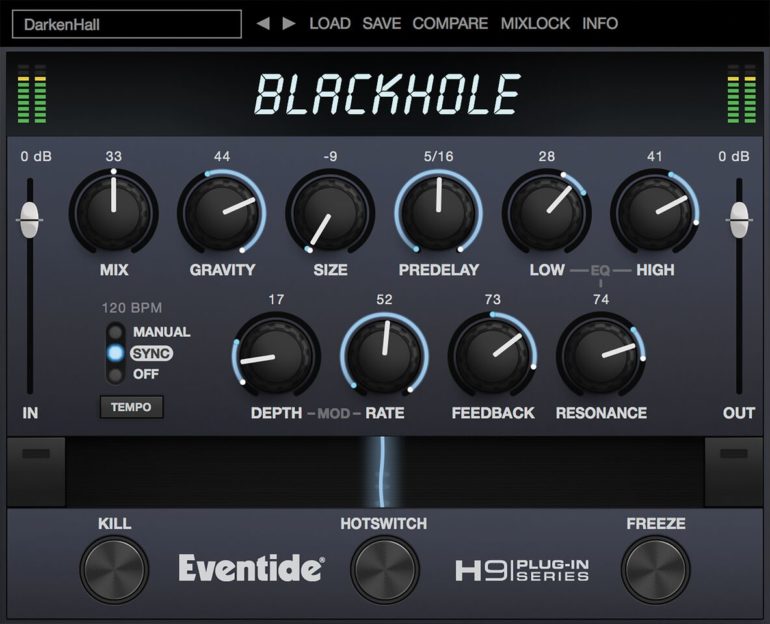
Blackhole Reverb is a massive reverb plugin based on an Eventide’s hardware stomp-box which, funny enough, share the same name.
Most reverbs emulate real spaces or plates, but Blackhole is intended for creating more abstract special effects.
Basically, it allows you to create virtual spaces which could never exist in reality.
If you’re looking for a simple reverb that can will give your vocals, drums, or any other instrument in the mix a subtle reverb effect, then Blackhole isn’t for you.
On the other hand, if you want a reverb plugin that can is capable of creating some highly unusual sounds, then by all means… get Blackhole.
The controls featured on this plugin are; Mix, Gravity (reverses the Reverb), Size, Predelay, Low and High.
Additionally, it can sync to your project’s tempo and it even features a Freeze mode that will keep the reverb effect playing indefinitely, which allows you to tweak more easily.
Find out more about Blackhole Reverb here.
Pro-R by FabFilter ($199)

FabFilter Pro-R takes a musical approach to reverb, offering user-friendly and non-technical controls like Brightness, Character and Distance to achieve the reverb sound you are looking for.
The stepless Space control lets you fade between dozens of different, carefully tuned room models, automatically choosing a matching decay time for a natural-sounding result.
While it may be an easy plugin to get started with, it also features in-depth customizability of the reverb settings by dragging nodes around like you would when using a traditional parametric EQ.
It is a great-sounding plugin, and like every other FabFilter plugin, it’s one I’d absolutely recommend.
There is also an integrated 6-band post-EQ, which allows you to completely shape the reverb in great detail.
Find out more about Fabfilter Pro-R here.
Little Plate by Soundtoys ($39)

Little Plate was Inspired by the original EMT 140 plate reverb, but with a couple added twists, and as you can see by the name, it’s only a Plate Reverb.
One of the differences between Little Plate and the EMT 140 is that the original reverb could only handle up to 5 seconds of reverberation time.
Little plate allows you to set the decay time to infinity, which means that the reverb tails never fade.

It also features a low-cut filter which will help you keep your mixes clean, as well as a Mod Switch which ads modulation into the Reverb tail.
If you want one of the simplest and easiest to use reverb plugins currently available, then Little Plate is definitely for you.
Find out more about Little Plate here.
MConvolutionEZ by MeldaProduction
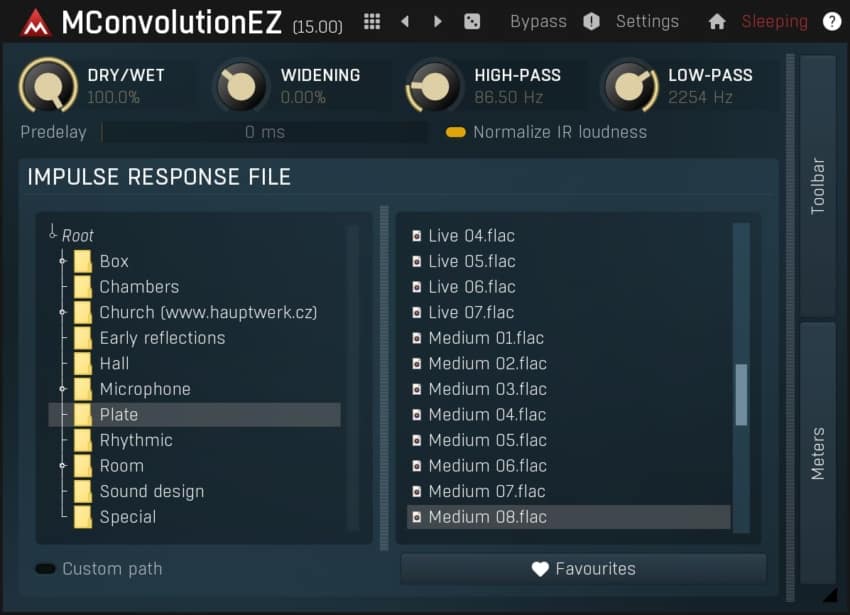
As the name implies, this is a convolution reverb designed to be simple to use. It’s worth noting that there’s also a premium version of this plugin available, the MConvolutionMB, which comes with a lot more built-in features.
While the interface itself may not be the most eye-catching you’re ever seen, the reality is that it sounds amazing (probably way better than many paid plugins as well).
If offers an immense range of impulse responses for rooms, halls, guitar cabinets, plates, churches, and a lot more, which gives you a lot of versatility at the time of adding the effect.
Sadly, it doesn’t offer as much control over the signal as some other convolution reverbs do, and you only get a Dry/wet knob as well as one for Widening, and HP & LP filters.
Oh, and I think it’s also worth mentioning that the MConvolutionEZ comes as a part of an entire effects bundle which includes around 30 free high-quality plugins. So, check that one out as well!
You can download it here.
Silver by Acustica Audio

Important note: To get this plugin, you will need to create an account on the Acustica Audio website and install it via their own installer, but it’s well worth it.
They offer the basic version of the plugin for free with some of the modelled environments, which are more than enough in my opinion, but should you want to up your game, you can always purchase the additional upgrades that they offer.
Now, Silver is one of the most realistic-sounding reverbs I have ever tried, but there is a downside to this which is that it used quite a lot of your CPU’s processing power, way more than any of the other plugins on this list and if you run multiple instances of it believe me, you’ll notice it (even one instance of the plugin already puts some strain on my CPU and I have an Intel I9 9900k, so keep that in mind).
All of that being said, like I just mentioned, it’s the most realistic-sounding reverb plugin on this entire list.
You can download it here (Remember to create an account and download it via the installer).
Valhalla Supermassive

Although Valhalla Supermassive can work as a delay as well, it is actually meant to be used as a Reverb VST that just happens to have an amazing delay section built-in that completely blows other dedicated delay plugins out of the water.
It features a total of 14 reverb/delay modes and a bunch of presets (from faster attacks, shorter decays, and high echo density all the way to lush reverbs that build into repeating patterns).
It’s one of the few plugins that can give you luscious clouds of reverb, otherworldly delays, and swelling waves of feedback all on its own, and controlling the different parameters is super easy and straightforward.
I honestly cannot believe that this plugin is free since they could easily be charging $50-100 for it without any issues. So, thank you Valhalla!
On a side note, make sure to check out all of their other plugins (these are not free, however). The Valhalla Room Reverb is also outstanding!
You can download it here.
Reverb Solo by Acon Digital (Free)
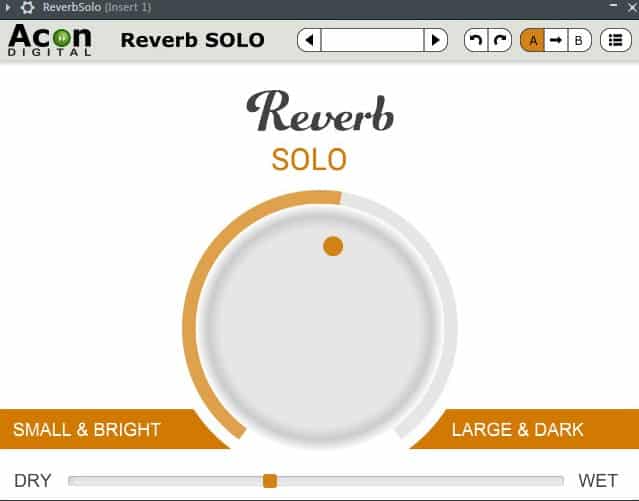
Speaking of ease of use, do you imagine being able to control the amount of reverb with just one knob?
Well, Reverb Solo features an ultra minimalistic interface and set of features; One knob to control the size of the room as well as the brightness at the same time, and another dry/wet slider, and that’s it!
This means that what it may lack in versatility, it definitely makes up in ease of use.
Granted, this reverb plugin won’t be able to fit all your needs, but if you’re a beginner, then I can’t think of any better way to get started using reverb since you won’t have to deal with dozens of settings and parameters.
Find out more about Reverb Solo here
PSP Springbox ($99)

Springbox emulates the traditional spring reverb that you hear on so many guitar recordings, which is usually only featured in high-end equipment and studios.
Lucky for you, Springbox emulates all those high-end spring reverb units at a very reasonable price.
If you need a reverb plugin for mainly electric guitar, this one should be a top priority.
However, not only can it be used on electric guitars, but you can use it on a number of different instruments to create some weird effects as well.
What sets Springbox apart from other Spring Reverb VST plugins is the sheer number of controls provides you with.
This allows you to dial in every detail to perfection, and it can create from traditional and realistic vintage spring reverb sounds all the way to extremely weird textures.
Find out more about Springbox here.
Softube TSAR-1 Reverb ($119)
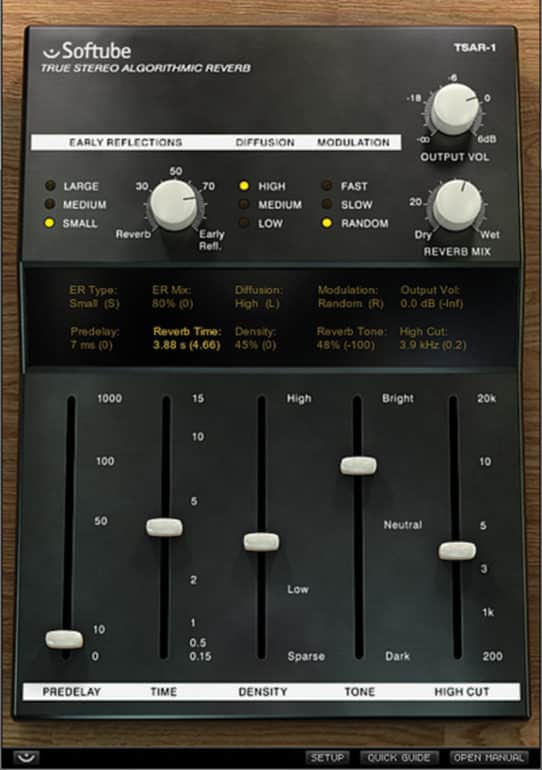
It’s not an emulation, nor stock design, or even a static snapshot of a space, but rather a modern reverb true stereo algorithm that sounds very natural and real.
If there’s one thing I really care about when reviewing plugins is that they need to be easy to use, at least as long as they don’t sacrifice overall flexibility and quality for it.
The TSAR-1 excels in this regard, featuring only a handful of controls, such as; Predelay, Time, Density, Tone and High Cut, as well as letting you control the early reflections, diffusion, and modulation.
Not only this, but it can produce a very realistic- and great-sounding reverb effect as well!
Find out more about TSAR-1 Reverb here.
Honorable Mentions
Don’t underestimate most free-and even stock plugins, since these may well be all you need in some-, or even most cases.
OrilRiver by Dennis Tihanov (Free)
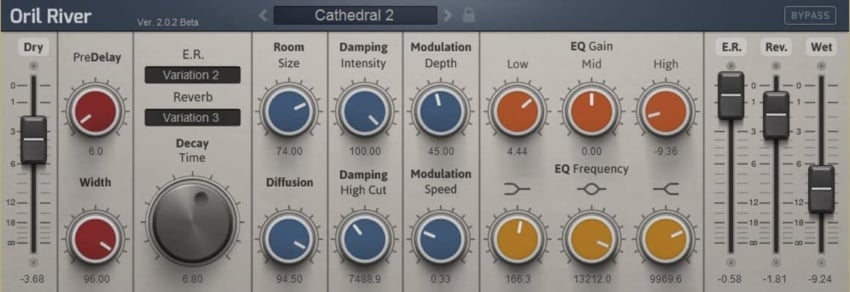
OrilRiver is a stereo reverb that comes packed with features, sounds great, and is on par with plenty commercial reverb plugins out there, but without breaking the bank.
It also features a 3-band EQ to help you tweak the tail of the reverb in greater detail.
While it only features Room and Hall reverbs, it’s by far the best free plugin you can get if you need one of those two reverb types.
You can download it here.
Tal-Reverb-4 (Free)
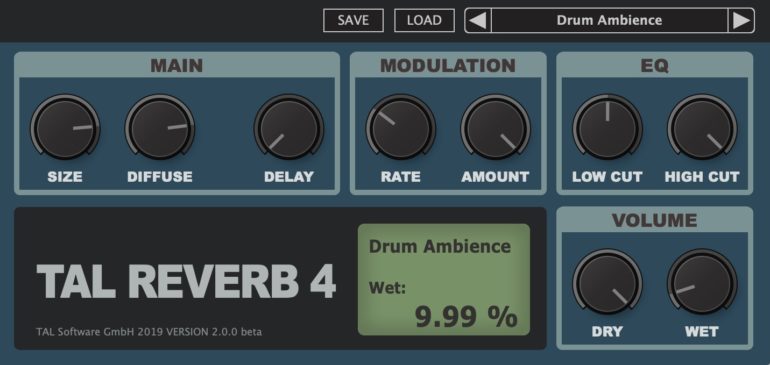
With just 6 knobs on the front panel, aside from “Dry” and “Wet”, it’s the ideal reverb plugin for any producer that values simplicity and ease of use and who wants a vintage-style reverb.
You can download it here.
Safe Reverb by Semantic Audio (Free)
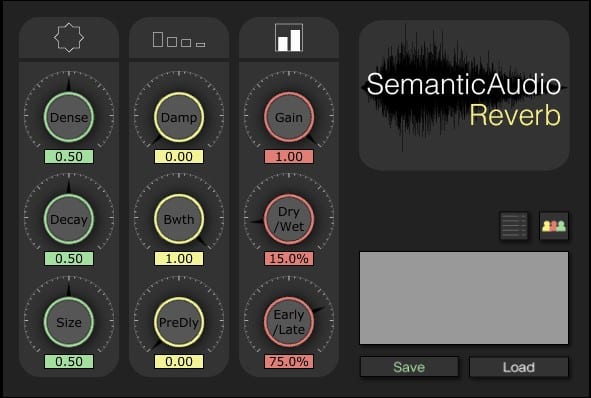
Ideal for beginners!
The whole point behind the SAFE plugins by Semantic Audio is to provide the user with an easier way to control the plugins by using semantic terms such as “warm, bright”, etc. to make the whole process more intuitive.
You just type the word in and it adjust the settings automatically.
You can save custom presets to the cloud while also being able to directly access the presets saved by other users.
Additionally, the SAFE Reverb plugin currently comes with hundreds of custom patches to choose from, all submitted by producers from around the world.
I’d recommend this reverb plugin mostly to beginners, since being able to control the plugin via “words” can help you better understand how reverbs work.
Give it a try!
You can download it here.
Your Stock Reverb
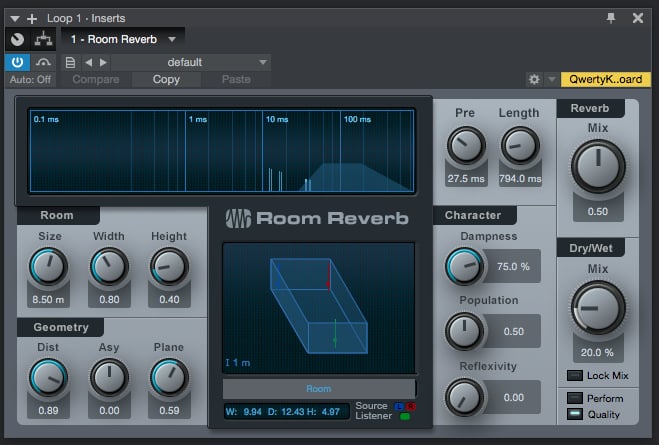
Every single DAW comes with some sort of reverb plugin already built-in, and these are generally enough to get you started, and in some cases even to produce professional music.
So, you don’t need to go out there and spend a fortune on a reverb plugin in most cases!
Conclusion
Some of these plugins come with a free trial, which means that you can try them out completely for free before putting down your money.
Depending on what kind of sound you’re going for, I’d suggest that you pay close attention to the reverbs I mentioned that tend to be used as an entirely different effect and not just to recreate the sound of a room.
I hope this information was useful!
Have a great day!
Frequently Asked Questions
A spring system has a transducer at one end of a spring and a pickup at the other.
It has a very distinctive sonic characteristic to it which is slightly darker, more metallic and edgier than the other reverb types.
At the time, spring reverb was frequently used for recording and it was commonly built into electric guitar amps since they’re pretty small and inexpensive to make.
Plate reverb is very similar to Spring reverb in the sense that it’s created by exciting a metal with a transducer.
It’s the typical sound of the age of analog recording.
They are not so common these days since in order to achieve this effect properly you need huge plates, which can be quite expensive.
Plate reverb blends well into the mix, which is why it’s so loved.
Algorithmic reverbs are created digitally by using cascading digital delay signals.
This creates the illusion of space. However, it doesn’t sound super natural.
The effect of a convolution reverb is created by measuring the reverberation of a real space with a microphone and an “impulse”.
These impulse responses are sonic profiles that the plugin can then apply to the sound.
